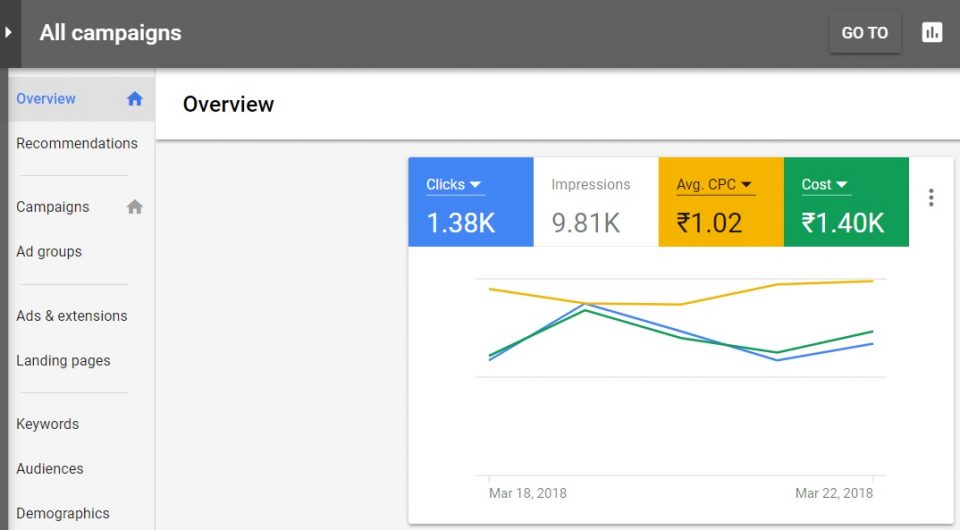Archives
- Newer posts
- April 2024
- November 2023
- October 2023
- August 2023
- May 2023
- February 2023
- October 2022
- August 2022
- July 2022
- May 2022
- April 2022
- March 2022
- February 2022
- June 2020
- March 2020
- February 2020
- January 2020
- December 2019
- November 2019
- October 2019
- September 2019
- August 2019
- July 2019
- June 2019
- May 2019
- April 2019
- March 2019
- February 2019
- January 2019
- December 2018
- November 2018
- October 2018
- September 2018
- August 2018
- July 2018
- June 2018
- May 2018
- April 2018
- March 2018
- February 2018
- January 2018
- December 2017
- November 2017
- October 2017
- September 2017
- August 2017
- July 2017
- June 2017
- May 2017
- April 2017
- March 2017
- February 2017
- January 2017
- August 2016
- June 2016
- April 2016
- March 2016
- February 2016
- January 2016
- July 2015
- June 2015
- Older posts

Google AdWords Success Metrics
To understand how well your Google AdWords is performing, there’s a list of key metrics you need to focus on. These will give you an insight into how optimized your AdWords campaigns are to give you the desired results.
1. Impressions:
The first metric you need to keep an eye on is impressions. It gives you the total number of times your ad was shown on the search engine results page when someone typed a query with terms that match your keywords. In order for your ads to get clicks that could possibly lead to conversions, it is important for them to show up. If you’ve noticed your ads are showing up frequently based on your targeting, then that’s a sign your ads are on the right path.
2. Clicks:
When someone clicks your ad, like on the ad headline, it is counted as a click. If your ads are appealing, they will receive a high number of clicks, which means you’ll have a high number of visitors to your website through ads. With this metric, you get an idea of how appealing your ads are to the target audience.
3. Click Through Rate (CTR):
Click Through Rate is one of the most important metrics for analyzing how well your ads are performing. This can be easily determined by dividing the number of clicks by the number of impressions. CTR helps to evaluate ad quality, relevance, and effectiveness. A high CTR implies that your ads are targeting the right audience with the help of relevant keywords that result in clicks that lead people to the website. If you find your ads having a low CTR, there could be a gap between keywords/ads and your target audience.
4. Cost:
It is important to ensure that you’re your investment in AdWords is helping you achieve your marketing goals. To ensure your ad campaigns yield good results while keeping your costs minimal, it is important to optimize them regularly.
5. Cost Per Click and Cost Per Acquisition:
CPC tells you the amount you pay for a click whereas CPA defines the per conversion cost. In other words, it tells you the cost involved in converting a visitor on your site into a customer. Normally your CPA will be relatively higher in comparison to CPC as there’s no assurance that the visitor after clicking the ad and reaching your website will complete the desired action. Your CPC determines your ROI. So it’s important to keep a check on how much you’re paying per click. Make sure you’re not overpaying or underpaying as this could affect your returns. Similarly, CPA should be monitored regularly to analyze if the cost to convert a visitor into a customer is not coming at a great price.
6. Average Position:
This tells you how your ad ranks in comparison to other ads. It defines the order in which your ad appears on the page. If your ad shows an average position that lies between 1-8, it means your ad is appearing on the first page and if it is anything between 9-16 it means your ad is displayed on the second page, and so on. If your ad has an average position of say 1.7 it means that your ad shows in either the 1st or 2nd position.
Keywords play an important role in determining your ad’s average position. By understanding how your ad ranks after being triggered by keywords used, you can try to modify the position by altering the keyword’s bid.
7. Converted Clicks or Conversion:
When a visitor clicks your ad, takes a desirable action on the landing page and completes a transaction, it is called a conversion. You have to decide what action based on your business goals will count as a conversion. It could be a registration, online purchase, call to your business number and so on. In simple words, converted clicks help to analyze the return on online ads or revenue generated through online ads. Hence, it is important to decide the conversion criteria based on what will add value to your business.
8. Conversion Rate (CR):
It gives you a percentage of visitors that have completed the desired goal on the website which has resulted in conversions. In simple terms, it tells you how many clicks have led to conversions. It helps you differentiate potential customers from visitors on the website as CR gives you a measure of how many visitors not only clicked your ad but also took a desired action on the web page. A high CR is a strong indicator of success for your campaigns.
9. Total Conversion Value:
It is the sum of all conversion values for all conversions. You need to assign a value to your conversions to calculate your returns. The value should be added directly to your conversion tracking code. Although Analytics produces data related to conversion value, you can analyze your cost and conversion value, as well as the return on ad, spend in one place using a single platform- Google AdWords.
Keep in mind the above parameters while creating Google Ads to get the best return on investment through your AdWords campaigns.
